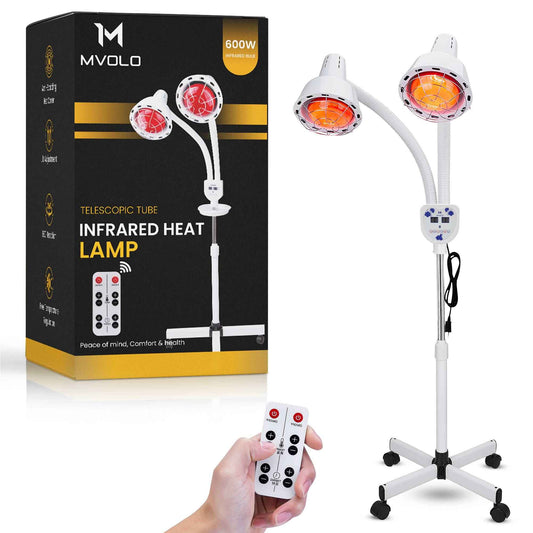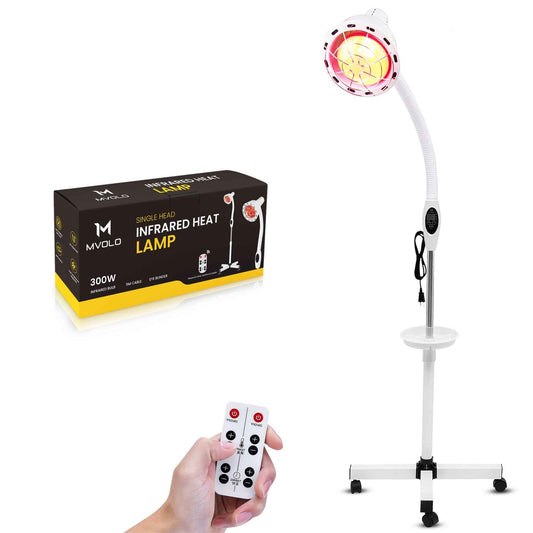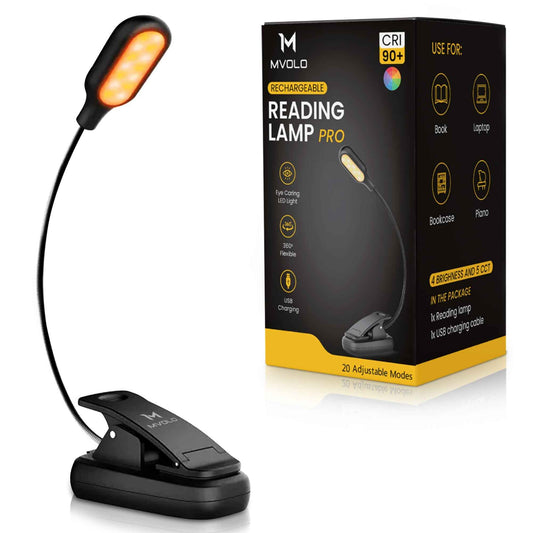How Red Light Therapy Can Help with Depression
Deel
Depression is a complex mental health disorder that affects millions of people worldwide. It is characterized by persistent feelings of sadness, hopelessness, and a lack of interest in daily activities. Depression can stem from various causes, including genetic factors, chemical imbalances in the brain, stressful life events, or a combination of these elements. According to research, depression is one of the most common mental health conditions and can significantly impair daily functioning (American Psychiatric Association, 2013).

How Does Depression Develop?
Depression can result from a variety of factors that directly affect the brain's chemical processes. A key player is the neurotransmitter serotonin, which is responsible for regulating mood. A deficiency in serotonin can lead to feelings of depression (American Psychiatric Association, 2013). In addition, chronic stress, trauma, or certain medical conditions can also increase the risk of developing depression. Long-term stress elevates cortisol levels, which can damage the hippocampus, the brain region involved in regulating emotions and memory (McEwen, 2007). Genetic predisposition is also significant, with research indicating that genetic factors account for approximately 40% of depression cases (Levinson, 2006). Life events such as the loss of a loved one, severe illness, or financial problems can further trigger depressive episodes (Hammen, 2005).
How Can Red Light Therapy Help With Depression?
One promising treatment being explored is red light therapy for depression. This approach, also known as low-level laser therapy, involves exposing specific areas of the body or head to red or near-infrared light. Red light penetrates deeply into tissues and has a positive effect on the energy levels of cells, particularly in the brain. Research has shown that red light improves mitochondrial function and increases ATP production, the body's energy molecules. This cellular boost can lead to better cognitive functioning and mood regulation, which is beneficial for individuals suffering from depression (Salehpour et al., 2019).
A study published in The Journal of Nervous and Mental Disease found that just one hour of transcranial low-level laser therapy resulted in significant improvements in depression scores (Schiffer et al., 2009). These findings suggest that red light therapy for depression may help by stimulating activity in the prefrontal cortex, the area of the brain responsible for mood and emotional control (Salehpour et al., 2019).
The importance of light therapy

In addition to red light therapy, general light therapy is commonly used to treat seasonal affective disorder (SAD)—a form of depression linked to seasonal changes, particularly during the darker winter months. Light therapy helps regulate the body’s natural circadian rhythm and boosts serotonin levels, both of which are important for mood stabilization (Lam & Levitan, 2000). While traditional light therapy uses bright white light, red light therapy for depression adds another layer by working at a deeper, cellular level to improve brain function and energy production.
References:
- American Psychiatric Association. (2013). Diagnostic and statistical manual of mental disorders (5th ed.). Arlington, VA: American Psychiatric Publishing.
- Hammen, C. (2005). Stress and depression. Annual Review of Clinical Psychology, 1(1), 293-319. https://doi.org/10.1146/annurev.clinpsy.1.102803.143938
- Lam, R. W., & Levitan, R. D. (2000). Pathophysiology of seasonal affective disorder: A review. Journal of Psychiatry & Neuroscience, 25(5), 469-480.
- Levinson, D. F. (2006). The genetics of depression: A review. Biological Psychiatry, 60(2), 84-92. https://doi.org/10.1016/j.biopsych.2005.08.024
- McEwen, B. S. (2007). Physiology and neurobiology of stress and adaptation: Central role of the brain. Physiological Reviews, 87(3), 873-904. https://doi.org/10.1152/physrev.00041.2006
- Salehpour, F., Cassano, P., & Hamblin, M. R. (2019). Transcranial low-level laser therapy for depression and major depressive disorder. Neurophotonics, 6(2), 020901. https://doi.org/10.1117/1.NPh.6.2.020901
- Schiffer, F., Johnston, A. L., Ravichandran, C., Polcari, A., Teicher, M. H., Webb, R. H., & Hamblin, M. R. (2009). Psychological benefits 2 and 4 weeks after a single treatment with near infrared phototherapy. The Journal of Nervous and Mental Disease, 197(10), 1-7. https://doi.org/10.1097/NMD.0b013e3181b94d00






